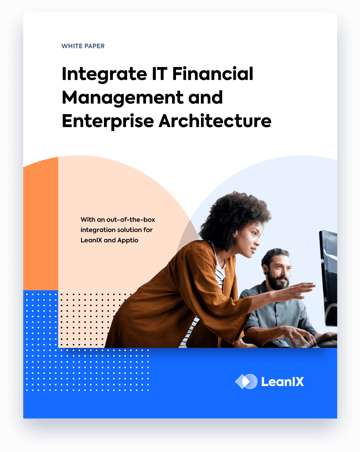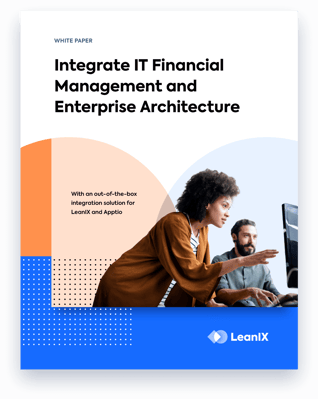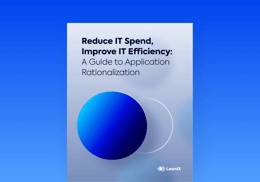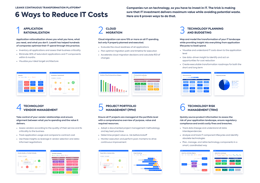How your IT costs can be significantly reduced
Strategic cost-cutting can be one of the most effective ways to prepare for stormy weather, even when a business is doing well. If the past years have sent one message to the world at large, it is that when the most unexpected circumstances occur, they will throw a wrench into the works. For business owners, it is more important than ever to create a buffer through cost-effective ITFM for unforeseen changes.
In the ideal form of IT cost optimization, application rationalization, and SaaS cost optimization are seen as an ongoing effort. It should be a process that is continually evaluated, reviewed, and expanded. Here are a number of ways to work towards IT cost reduction:
Suspend or reimagine
Suspend or reimagine services that have proven to be cost-ineffective or which value is ultimately limited. However, this doesn’t mean you have to hack away at each and every section of IT in the name of IT financial management. Whittling away at projects, systems, or services that the company requires will only make the company suffer more once the business returns to normal.
Focus on immediate hurdles
The cost of IT services is at the mercy of the ever-changing nature of IT itself, therefore, it is best to recover costs that will affect the budget in the coming months, rather than the coming years.
Be rational instead of holding on to it
It is better to reduce or eliminate excess or expendable costs rather than freezing them until later. Try to handle problematic expenditure before it rears its ugly head in the future.
Best Practices for IT Financial Management
Below is a list of strategies that help you establish the best IT financial management practices.
- Create a financial foundation. It doesn’t matter what business, organization, or company you may be a part of, all areas of the workplace are reacting and operating off of an accepted base starting point; an agreed collective reality for the organization’s financial situation. IT is no different. Or, more accurately, it should be no different.
However, the issue that arises in IT departments is that IT experts typically have very little insight into the wider financial implications of their services and work. Like ripples in a pond, every IT action has an effect on the collective business body, but without the ability to count, observe and record those ripples, IT departments cannot modify their actions adequately.
- Cut current spending. While being able to cut away unnecessary or superfluous aspects of a business model is a good method for improving profitability, the way this relates to IT goes beyond up-front purchases or labor costs.
Although expenditure on items such as licensing is indeed important, more intangible outgoings should be considered as well. For example, discontinuing services that are logged as underused and eliminating apps that have the same role are two simple ways of eliminating unnecessary costs.
- Prevent unexpected spending. Resources for IT can add up quickly. And with the amorphous nature of the cloud already, IT cost management must be prepared for some unexpected changes. Prepare for potential turbulence by tracking and comparing actual spend with projected spend. This will help you predict future costs.
- Address accountability. One of the primary issues in modern IT management is the lack of accountability for IT expenditure. The increased reliance on technological services has also given rise to the over-approval of IT spending. Even higher-ups have been guilty of a “no expense too great” approach when it comes to ITFM.
But in effective IT financial management, tagging systems should be implemented to fully account for every dollar spent. This enables every IT member to make informed decisions and forecast costs, minimizing superfluous spending, and maximizing accountability.
Accountability for IT is made even easier through LeanIX. Tools like The Application Landscape and the Business Capability cost report allow finances to be easily monitored and reviewed in relation to the wider enterprise budget.
- Model IT for the business. Every business is unique, and every business requires a tailored ITFM structural framework. It is vital to facilitate communication between teams so that the organization’s business goals and IT budget can be aligned. When matched with a well-fitted ITFM structure, a streamlined IT department can increase overall company profits.
- Look ahead. ITFM is a continual process. Alongside their regular duties, managers should always be aware of what’s lurking around the corner. Future objectives need to be prioritized, and partners should meet regularly to communicate their plans so that everyone involved stays informed and prepared.
IT Budget Management Framework
Now we’ve discussed some of the strategies and reasons behind a robust ITFM system, but how do you put a model like this into practice?
IT cost management should be based on a relationship between the CIO and CFO, with IT demonstrating how its department can be run just like a business. According to Gartner, 81% of a CIO’s budget is used by IT on average.
Clearly, the responsibility falls on the CIO to ensure that IT’s actions are as efficient and as low-impact as possible, as to not negatively impact the rest of the budget and the organization as a whole.
Taking responsibility for IT spend is the most important step in forming a healthy rapport between CIO and CFO. After all, this is where an open dialogue truly begins. From here on out, the CFO and IT can collaborate through a number of different means:
- Use technology to optimize business processes
Use IT experts as well as other company members to form a special task force. This group should highlight areas that could be improved through innovative technology projects. While these projects serve to further increase the efficiency or effectiveness of IT itself, they can be used to optimize all other aspects of the business as well.
- Optimize your IT budget
This goes back to the accountability aspect mentioned earlier. Make sure that IT financial management is focused on tagging and recording all spending. Seeing IT expenses from the CFO’s point of view and then letting IT teams budget and forecast more mindfully.
- Increase visibility
Task IT with creating a service catalog that illustrates the value of the company’s services from a client’s perspective. You can do this alongside other IT valuations of OPEX and CAPEX in order to paint a much more detailed picture for stakeholders.
But how does an IT financial management framework look like? It is simple to advise that IT should be “run like a business”, but how this can be achieved in practice is a lot less clear.
As an increasing number of external solutions such as software and new infrastructures are made available, internal IT must provide services that are better run, better optimized, and offer better value.
Technology Cost Management 4D Framework
One framework that breaks down the “run like a business” strategy is laid out by Cognizant and is known as a Technology Cost Management 4D Framework. The framework consists of four pillars:
- Define the business vision, in which all IT expenditure should be aligned with the overall objectives of the business through a sense of co-ownership of IT;
- Document the current state, where a snapshot of the business at present is taken to highlight problematic points as well as points for improvement;
- Delineate target business architecture, whereby the business architecture is defined in line with findings from the business vision stage; last is
- Decide: build vs. buy, where the organization makes the decision of whether to create solutions in-house, buy an off-the-shelf product, or use a hybrid approach.
The Evolution of IT Financial Management and Cost Management
It was once all too common that businesses would only consider cost management, let alone IT cost management when they found themselves in the midst of troubling times. Nowadays, teams have the foresight to use cost management all year round, even when a business is thriving.
From the 1980s, the traditional form of cost management was focused on cost categories and processes. In this period, cost management was aimed towards continuous improvement and business process re-engineering.
But with the financial crisis in 2008, operating models began to take an alternative pathway. There was a shift towards a globalized operating model and globalized governance, as well as a shift towards new types of service delivery from local to global.
However, in 2017 we witnessed the emergence of new digital and technological cost solutions. This generation of cost management is where we can find modern ITFM that focuses on cognitive technologies like AI and cognitive automation to improve labor and overall efficiency. There is also a growing push towards robotics process automation replacing labor.
Currently, in 2020, the increased adoption of technological solutions is even more apparent. IT spend by industry is observed to increase alongside revenue, and according to Spiceworks, 44% of businesses were expecting to increase their budgets from 2019, while a meager 8% expected a decrease.
This trend does not exclude particular industries either, according to data from Flexera. A percentage of 56% of the responding organizations expected increased IT expenses in 2020. So, it does not seem to matter what kind of business we are talking about, IT spend by industry is increasing from year to year. The reasons for this technological push are multifaceted.
According to Spiceworks, one of the most influential factors is the necessary spend towards upgrades for outdated infrastructure, with 64% of companies naming this reason. Alongside worries on security and having to hire more employees, another significant factor is the prioritization of IT projects, which stands at 45% of the companies asked.
Conclusion
The most salient point in any discussion about proper ITFM is how important a proactive attitude to IT cost reduction truly is. While there are many nuances in the best practices laid out above, successful ITFM largely hinges on the continual evaluation and development of IT and IT departments holding themselves accountable.
IT is as dynamic and variable as ever, and organizations whose services depend on the execution of IT must be able to predict, plan, and compensate in an ever-changing IT landscape. But it is not simply the role of the CFO to entirely shift their budget towards the unmonitored actions of IT.
Instead, an open and productive channel of communication is required where the needs and costs of each leg of the business can be discussed in an overall context. ITFM should be conducted like a business, with all costs, outgoings and expenditure logged and accounted for. Thus, IT cost reduction can be achieved by actively and concurrently forecasting future costs, minimizing current expenditure, streamlining services, as well as other strategies that depend on the individual business model.
This entire process can be facilitated through EA tools that follow the trend of using IT solutions for ITFM improvement. By using enterprise architecture tools, IT financial management can not only streamline the operations of the enterprise but also the process of streamlining itself.




/EN-Apptio_App_Rationalization_Framework-Poster_Resource_Page_Thumbnail.png?width=260&height=184&name=EN-Apptio_App_Rationalization_Framework-Poster_Resource_Page_Thumbnail.png)



